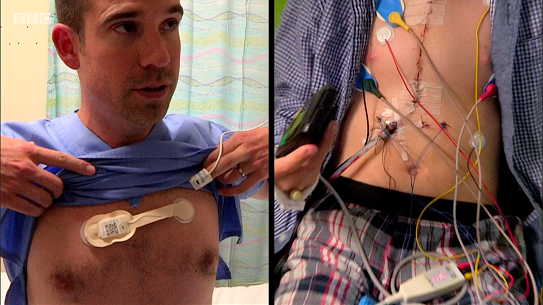
News -
Isansys Lifecare's Wireless Patient Monitoring System Features on the BBC
We are delighted to be featured on the BBC’s CBBC show Operation Ouch!
Isansys Lifecare is the company that created the Patient Status Engine, a continuous patient monitoring system which was demonstrated on the programme.
The PSE allows a child or adult to be monitored wirelessly and continuously in real-time, ensuring any deterioration in the condition of a patient is identified more quickly and timely treatment is given.
The system uses wireless body-worn sensors including the Isansys' Lifetouch cardiac monitoring smart patch and the Lifetemp wireless thermometer to collect and analyse heart rate, respiration rate, heart rate variability, temperature, oxygen saturation and blood pressure. This collection of accurate real-time data allows doctors and nurses to monitor patients better, more closely, more efficiently, and continuously, and alerts them to any signs of deterioration earlier.
The system takes patient measurements every second, significantly more often than current practice where the majority of patients in hospital have vital signs taken only once every 4-8 hours. Infrequent monitoring means that deterioration in patient conditions may go unnoticed, potentially leading to longer stays in hospital, more expensive treatments or even admittance to intensive care.
The wireless nature of the Lifetouch and Lifetemp mean that a patient’s stay is made more comfortable. Patients can walk around the hospital and can even go home wearing the device and still be monitored almost as if they were in an intensive care unit.
Within the programme, the presenter Dr Chris highlights how the innovative nature of the PSE technology means data is automatically downloaded to the bedside computer so there is no need for manual entry charts. This reduces transcription errors, makes handovers easier and enables nursing staff to spend more time caring for their patients.
During the Operation Ouch feature, Dr Chris is also fitted with the Lifetouch sensor and shows just how easy and simple it is to be monitored continuously without having to be connected permanently to a hospital bed. Once fitted with the device, he walks around the hospital – even doing some starjumps and pressups to show just how much more comfortable a child’s stay in hospital would be if they wore this wireless technology. He then points out that when you come back to the bedside, all vital sign data is automatically downloaded to the bedside table and there was no data loss – despite the fact he was at the other end of the hospital.
The PSE is currently in use at the Birmingham Children’s Hospital and has monitored nearly 1,000 patients over the last 18 months.
Dr Alex MacDonald, who is working on the RAPID (Real-time Adaptive and Predictive Indicator of Deterioration) project at the hospital, says that the next step is to monitor the patients whilst they are in hospital but then to let them go home wearing the device so the doctors can continue to monitor them whilst they recover in their own homes.
You can watch the clip here....